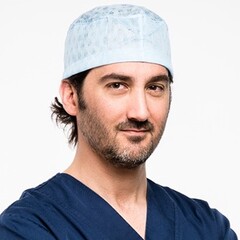Vascularized Composite Tissue Engineering (VCE): An Emerging Field in Regenerative Transplantation
A special issue of Bioengineering (ISSN 2306-5354). This special issue belongs to the section "Regenerative Engineering".
Deadline for manuscript submissions: closed (29 February 2024) | Viewed by 2091
Special Issue Editors
2. Reconstructive and Plastic Surgery Department, Hôpitaux IRIS Sud, Brussels, Belgium
Interests: plastic; reconstructive and aesthetic surgery; tissue regenerative; transplant
Interests: body-contouring surgery; reconstructive surgery; perforator flaps; abdominal wall reconstruction; microsurgery; adipose-derived stem cells
Interests: microsurgery; plastic and reconstructive surgery; reconstructive surgery; microvascular surgery; facial plastic surgery; head and neck surgery; maxillofacial surgery; surgical flaps; free tissue flaps; facial reconstruction
Special Issue Information
Dear Colleagues,
The future of reconstructive transplantation will rely on regenerative medicine to address and overpass current issues and limitations in the field. Since the first successful hand transplant, the refinement of surgical techniques has led to various over types of vascularized composite tissue allotransplantation (VCA), such as face, abdominal wall, or uterus. However, the offer remains limited by the need for lifelong immunosuppression for a non-vital procedure. The transformation of transplantable body parts, through cell therapy or biofabrication with tissue engineering, represent a true hope: we called the related approach “Vascularized Composite tissue Engineering” (VCE). To be successful, VCE will require a strong association with current VCA knowledge, as well as a very transversal multidisciplinary work, such as tissue engineering, stem cell biology, organ perfusion, and tissue banking, as non-exhaustive examples. Presently, VCE is still a translational research niche; thus, we hope that this Special Issue, Vascularized Composite Tissue Engineering (VCE): an Emerging Field in Regenerative Transplantation, will trigger a dramatic and successful expansion of the research field.
Dr. Jérôme Duisit
Prof. Dr. Nicolas Bertheuil
Prof. Dr. Patrik Lassus
Guest Editors
Manuscript Submission Information
Manuscripts should be submitted online at www.mdpi.com by registering and logging in to this website. Once you are registered, click here to go to the submission form. Manuscripts can be submitted until the deadline. All submissions that pass pre-check are peer-reviewed. Accepted papers will be published continuously in the journal (as soon as accepted) and will be listed together on the special issue website. Research articles, review articles as well as short communications are invited. For planned papers, a title and short abstract (about 100 words) can be sent to the Editorial Office for announcement on this website.
Submitted manuscripts should not have been published previously, nor be under consideration for publication elsewhere (except conference proceedings papers). All manuscripts are thoroughly refereed through a single-blind peer-review process. A guide for authors and other relevant information for submission of manuscripts is available on the Instructions for Authors page. Bioengineering is an international peer-reviewed open access monthly journal published by MDPI.
Please visit the Instructions for Authors page before submitting a manuscript. The Article Processing Charge (APC) for publication in this open access journal is 2700 CHF (Swiss Francs). Submitted papers should be well formatted and use good English. Authors may use MDPI's English editing service prior to publication or during author revisions.
Keywords
- vascularized composite allotransplantation
- tissue engineering
- regenerative medicine
- plastic surgery
- decellularization
- recellularization
- bioprinting
- composite graft perfusion
- cell therapy








